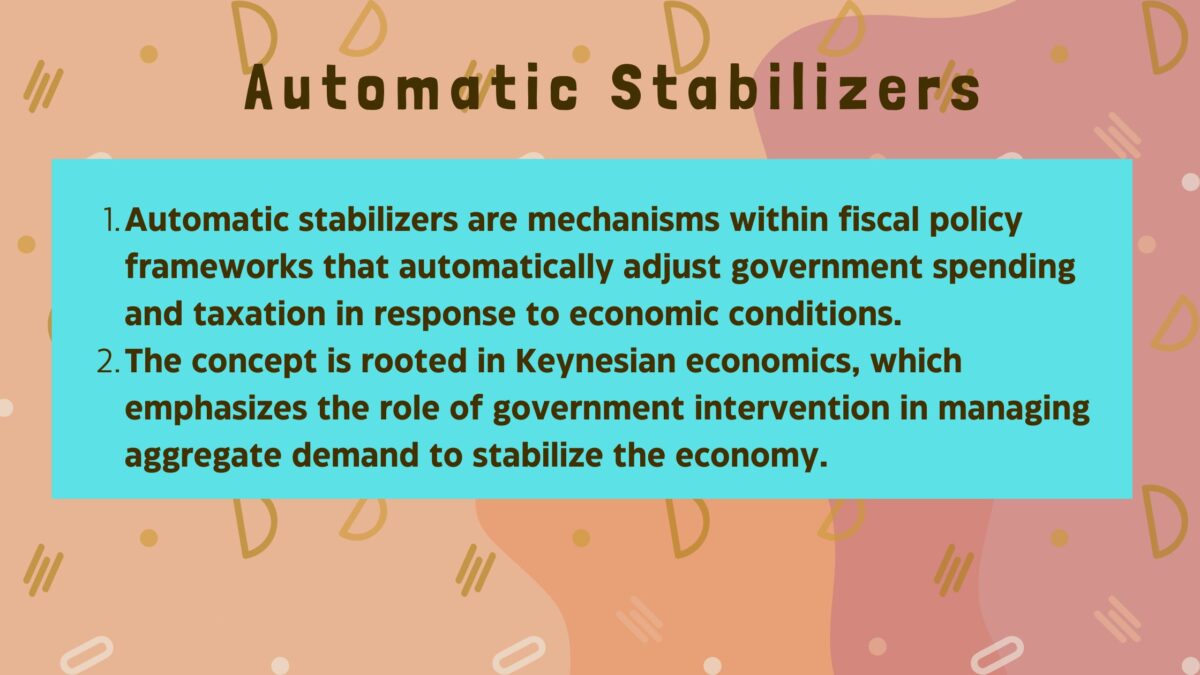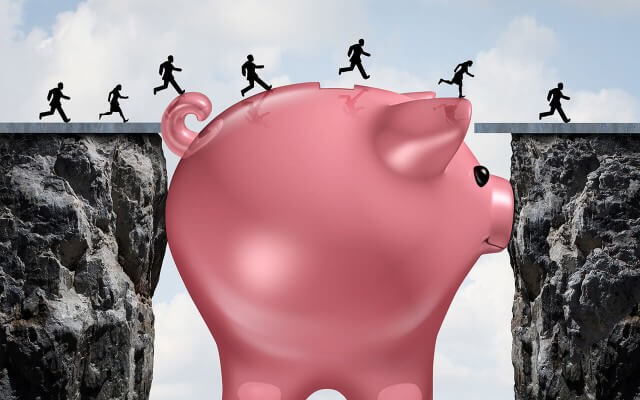Automatic stabilizers: Definition, Mechanism and Significance [updated 2024]

Automatic stabilizers are a cornerstone of fiscal policy designed to mitigate the impact of economic fluctuations without requiring explicit government intervention.
Unlike discretionary fiscal measures, which involve deliberate changes in taxation and government spending, automatic stabilizers operate passively, adjusting fiscal policy parameters in response to changes in economic conditions.
They are inherent features of taxation systems and social welfare programs that automatically expand or contract in line with economic activity, helping to stabilize aggregate demand and smooth out business cycles.
Introduction to Automatic Stabilizers
Automatic stabilizers are mechanisms within fiscal policy frameworks that automatically adjust government spending and taxation in response to economic conditions.
The concept is rooted in Keynesian economics, which emphasizes the role of government intervention in managing aggregate demand to stabilize the economy.
Unlike discretionary fiscal policy, which requires legislative action and administrative implementation, automatic stabilizers operate automatically based on pre-established rules embedded in the tax and welfare systems.
Mechanisms of Automatic Stabilizers

Automatic stabilizers function through two primary channels: the revenue side and the expenditure side.
1. Revenue-Side Automatic Stabilizers:
Progressive taxation systems are a key revenue-side automatic stabilizer. In progressive tax systems, tax rates increase as income levels rise, resulting in higher tax revenues during economic expansions when incomes are higher.
This progressive structure automatically stabilizes economic activity by reducing disposable income and curbing excessive consumption during booms.
2. Expenditure-Side Automatic Stabilizers:
Social welfare programs, such as unemployment benefits, food assistance, and Medicaid, act as expenditure-side automatic stabilizers.
During economic downturns, when unemployment rises and incomes decline, the number of individuals eligible for these programs increases.
As a result, government spending on social assistance automatically expands, providing income support to affected individuals and stimulating aggregate demand.
Effectiveness of Automatic Stabilizers
Automatic stabilizers are generally considered effective in stabilizing the economy by offsetting fluctuations in aggregate demand.
During recessions, they provide a timely boost to demand, helping to cushion the decline in economic activity.
Conversely, during periods of economic expansion, automatic stabilizers moderate excessive growth by reducing disposable income and increasing tax revenues, thereby preventing overheating and inflationary pressures.
Advantages of Automatic Stabilizers
- Timeliness: Automatic stabilizers respond immediately to changes in economic conditions, providing timely support to the economy without the need for legislative action or administrative implementation.
- Built-in Stability: By being built into the tax and welfare systems, automatic stabilizers provide a stable and predictable framework for managing economic fluctuations.
- Political Neutrality: Automatic stabilizers are less politically contentious than discretionary fiscal measures, as they operate based on pre-established rules rather than political discretion.
Examples of Automatic Stabilizers
- Progressive Income Taxes: Progressive income tax systems automatically generate higher revenues during economic expansions as incomes rise, helping to dampen excessive consumption and investment.
- Unemployment Insurance: Unemployment insurance programs automatically expand during recessions as more individuals become unemployed, providing income support and stimulating aggregate demand.
- Social Security Benefits: Social security programs automatically adjust benefits based on inflation and other economic factors, providing stable income support to retirees and beneficiaries.
Historical Development of Automatic Stabilizers
The concept of automatic stabilizers has its roots in the theories of Keynesian economics, which gained prominence during the Great Depression of the 1930s.
John Maynard Keynes advocated for active government intervention to stabilize the economy through fiscal policy. The idea of automatic stabilizers gained traction in the post-World War II period, leading to the adoption of various social welfare programs and progressive taxation systems.
Policy Implications of Automatic Stabilizers
Automatic stabilizers have significant policy implications for fiscal policy design and macroeconomic management.
Policymakers must consider the design and effectiveness of automatic stabilizers when formulating fiscal policy strategies.
Additionally, coordination between automatic stabilizers and other macroeconomic policies, such as monetary policy, is crucial for achieving macroeconomic stability.
Criticisms and Limitations of Automatic Stabilizers
While automatic stabilizers are generally praised for their effectiveness, they are not without limitations:
- Budget Deficits: Automatic stabilizers may exacerbate budget deficits during economic downturns as increased government spending and reduced tax revenues strain public finances.
- Inefficiencies: The design of automatic stabilizers may not always be optimal, leading to inefficiencies or unintended consequences.
- Long-term Sustainability: The long-term sustainability of automatic stabilizers, particularly social welfare programs, may be a concern in aging populations and changing demographic trends.
Challenges and Future Directions
As economies evolve and face new challenges, the role of automatic stabilizers may need to be reassessed and adapted accordingly. Technological advancements, demographic changes, and globalization pose new challenges to the effectiveness of automatic stabilizers.
Policy makers must continuously evaluate and refine the design of automatic stabilizers to ensure their relevance and efficacy in stabilizing modern economies.
Conclusion
Automatic stabilizers are essential tools of fiscal policy that play a crucial role in stabilizing the economy by automatically adjusting government spending and taxation in response to changes in economic conditions.
By providing timely support to aggregate demand during recessions and moderating excessive growth during expansions, automatic stabilizers contribute to macroeconomic stability.
While they have their limitations and challenges, the overall effectiveness of automatic stabilizers in stabilizing the economy cannot be understated. Continued research and policy innovation are necessary to enhance the design and effectiveness of automatic stabilizers in the face of evolving economic dynamics.
Also read:
- National Domestic Product (NDP)
- Gross National Product (GNP)
- Understanding of NNP (Net Nation Product)
- 15 FAQ on Personal Finance
- Gross Domestic Product (GDP)
- 15 FAQ on 80-20 Rule (Pareto Principle)
- Depreciation- Meaning, Definition, Types and Calculation
- Fiscal Deficit- Definition, Calculation and Significance
- Balance of Payments (BoP): Explained
- Balance of Trade: Definition, Measurement and Significance
- Allocative efficiency: Definition, Meaning and Significance





